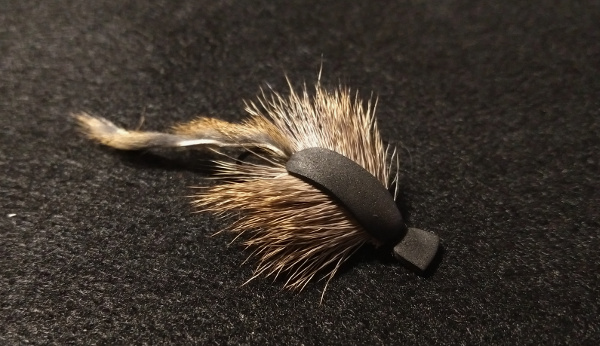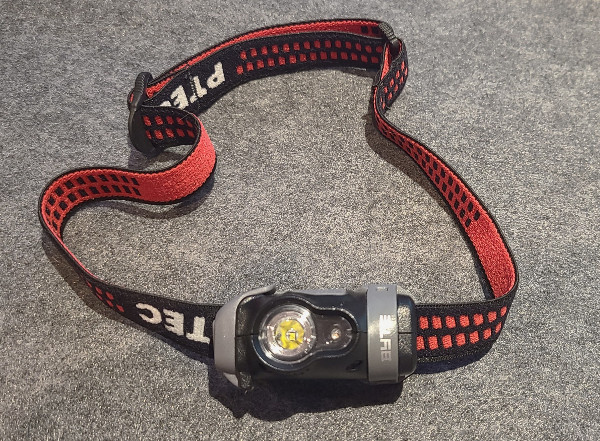Do trout bite at night? I can tell you definitively that yes, trout do feed in the dark. Not only can trout be caught at night, but it tends to be big trout that feed more heavily in the dark. Let’s talk a bit about nighttime trout feeding habits and go over some techniques for how to catch trout after dark.
Trout Behaviour at Night
As mentioned earlier, you tend to catch bigger fish during the night. Big trout feed quite passively during the day, lying in wait, grabbing whatever prey the river currents bring by them. They become much more active in their feeding behavior after sunset. Big trout leave the security of their daytime sheltering lies, and start cruising for prey in more open water.
Being better shielded from predators at night, trout lose some of the caution they are known for. They become much more active in their hunting style, and their behavior looks more like a cruising bass than a typical trout. This is trout of brook, rainbow, and brown trout.
Trout Night Vision & Senses
Even though trout eyes aren’t specifically adapted to nighttime vision, they aren’t completely blind in the dark. They still have functional eyesight in low light conditions, and can use it to locate prey during the night.
From personal experience, strong moonlight seems to make a difference in how successful you’ll be night fishing. I’ve caught more fish during a night when the moon was out than I have on a moonless night. I assume that the light given off by the moon is sufficient for trout eyesight, but trout eyesight struggles on a completely moonless night.
Even though it seems counter-intuitive, darkly coloured flies actually create a better silhouette at night than lightly coloured flies do. The most productive colour for nightime fishing tends to be black, with perhaps some accents of red or dark purple.
So we’ve established that trout have some level of nighttime vision, even if it’s diminished when compared to their daylight vision.
Eyesight isn’t a fish’s only sense though. In low light conditions, the lateral line is one of the primary senses fish use to detect both prey, and threats. The lateral line allows fish to detect movements in the water with surprising accuracy.
Trout really rely on their lateral line at all times, but this is especially true in lowlight conditions. Trout tend to key in on larger prey in lowlight conditions simply because they push more water when moving, so are more easily picked up by a fish’s lateral line. Using flies or lures that push a bit of water will allow trout to more easily detect them at night.
Fly Selection for Nighttime Trout Fishing
I’m going to focus on fly fishing techniques here since that’s what I’m most familiar with. For any gear angler reading this, you apply much of the information here to trout lure selection as well.
Let’s go over the best fly selection for trout fishing after dark.
Streamers
The big trout are cruising primarily for baitfish at night, so streamers are usually very productive. Choose larger flies than normal with a nice profile so the trout can easily pick it out. Many streamers designed for night fishing also have bigger heads that push alot of water. The more water a fly displaces when moving, the easier it will be picked up by a fishes lateral line.
Big articulated patterns tend to perform well at night, but aren’t always necessary. A big single hooked zonker fly with a deer hair head can also be quite productive. Sometimes it’s a full moon and trout are feeding on small baitfish, in such situations, it may be necessary to use a smaller streamer pattern such as a standard black wooly bugger.
As with all nightime fishing, the flies used should be darkly coloured.
Night streamer patterns:
- Slumpbusters
- Articulated streamers (Dungeons, Boogie Man, Cheech Leech, etc)
- Big Muddler Minnows
- Zonkers
Topwater

Mousing immediately comes to mind when talking about nighttime trout fishing. Mousing for big trout in the dark has a bit of a cult following of dedicated fly anglers, particularly those anglers chasing big brown trout and big rainbow trout. A combination of factors makes mice patterns more effective at night. Rodents are more active at night, so more likely to find themselves in water. Trout are also less selective about what they eat, and more willing to eat larger meals (such as mice!).
Aside from mice, anything that makes a commotion on the water will work. A dying minnow, a struggling rodent, a drowning grasshopper (or Dragonfly). All these make enough commotion to be noticed by a trouts lateral line, regardless of whether they can actually see the prey item or not.
On the more finesse side of things, there are actually some species of mayfly, caddisfly, and stonefly species that hatch during the night. If the trout are feeding on them, they can obviously find them. This is a match-the-hatch situation, fish whatever you have in your fly box that best matches what the fish are eating.
If you’re a spin angler, there’s plenty of topwater lures intended for bass fishing that will work in low-light conditions. Think large panfish lures or small bass lures.
Night Topwater Patterns:
- Morrish Mouse (& other mouse fly patterns)
- Swimmin Jimmy (Good day or night really)
- Poppers
- Large Dries (Match whatever is hatching)
Prime Fishing
Even though trout can be caught at night, the best time of day for trout fishing is still either dusk or dawn. There’s enough light that trout can still see easily, but it’s still dark enough that they’re not easily spooked. In warmer months, the temperature is also cooler at this time of day, especially in the morning as the water has had all night to cool down.
Unfortunately, that’s quite a brief window of time, so we can’t always fishing during the prime ~1 hour of the day. Nighttime fishing is often the next best thing. If I’m going night fishing, I like to arrive early enough to take advantage of the bite at sunset.
What Equipment Do I Need for Nighttime Fly Fishing
Aside from the standard fly fishing equipment, what else do you need when fishing for trout at night?
Headlamp

A good headlamp is the primary piece of equipment you’ll need that anglers may not already own. You want one with multiple brightness settings and one that has both red and white light settings.
When actually fishing, you don’t want to use the headlamp. The light will scare the fish. The headlamp is used when landing/releasing a fish, when changing flies, and when dealing with tangled fly line (which happens more often at night, especially the first few times out… don’t get discouraged!).
If you’re not already using barbless hooks, I highly recommend using them night fishing. Removing hooks is much easier when they’re barbless, and you’ll appreciate this when unhooking fish in low light conditions. Using weedless flies may also reduce headaches, as snags are doubly as frustrating in the dark.
When using the Headlamp (Amazon Link), try to use the dimmer red light whenever possible. Not only is this less likely to scare the fish, it also saves your night vision. When using bright light, it can take upwards of 20 minutes for your eyes to fully re-adjust to the darkness afterward.
Another tip to reduce your chances of scaring the fish is to turn away from the water you’re fishing anytime you use your headlamp.
Bug Spray
I know many folks bring this every time anyway, but it is especially important at night. 9 times out of 10, as bad as the bugs are during the day, they’re going to be worse at night.
Don’t forget the bug spray.
Where Should I Fish During the Night?
The number one piece of advice I can give for fishing in the dark, is to fish water you’re familiar with. You should have already fished this water during the day atleast a few times to become familiar with the deep holes, drop-offs, snag, structure, etc. This not only lets you learn the water and target fish better, but it’s also a safety consideration as well. You don’t want to be surprised by sudden drop-offs when wading.
If you have discovered a new fishing spot. Make a point of fishing it in the day first before coming back to fish it at night. Also, best to only bring serious anglers with you, night fishing isn’t the time to introduce someone new to the sport.
City lights, & street lights can also have an effect. Often smaller baitfish will be attracted to the lights, and larger predatory fish will hide just outside the light waiting to pounce. This is true of many different predatory fish, not just trout. Honestly, though, I’ve had better luck night fishing the further away from artificial light I’ve been. Also check your local regs, it might not be legal to fish under a street light in your area.
Other Fish Species to Target at night.
Honestly, most predatory fish can be caught at night. Mooneye and Walleye are two that I’ve had significant success targeting while fly fishing.

2 thoughts on “Do Trout Feed at Night? How to Catch Trout in the Dark.”